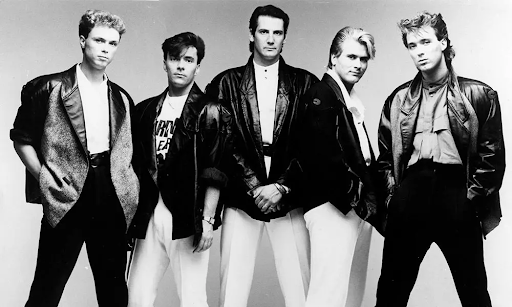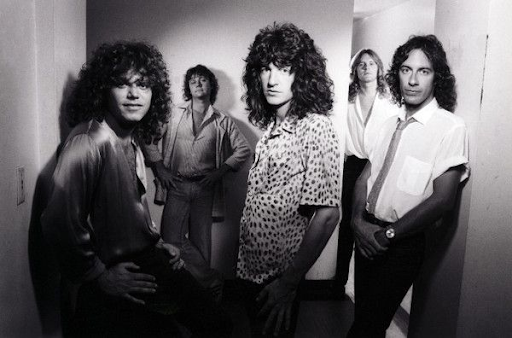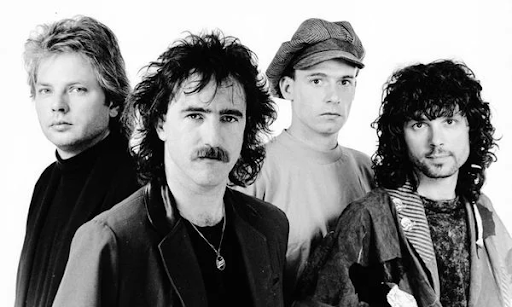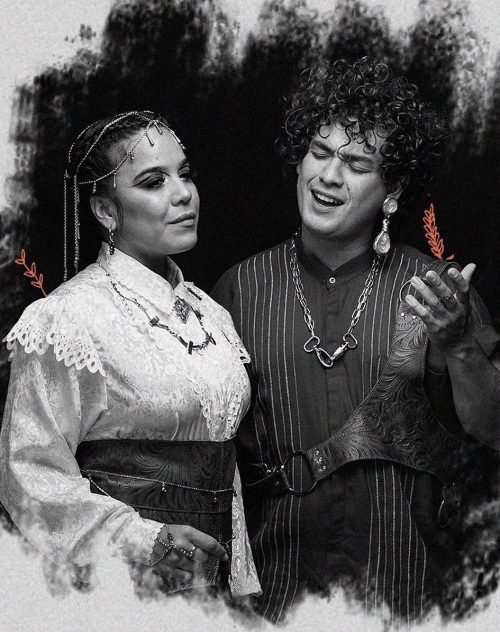
Double P at the Top of Regional Mexican Music
Peso Pluma, whose real name is Hassan Emilio Kabande Laija, has taken the music scene by storm, becoming one of the most listened-to and acclaimed artists in the regional Mexican genre. This young singer and songwriter from Guadalajara, Jalisco, has quickly climbed the charts, capturing a massive audience with his unique style and lyrics that deeply resonate with younger generations.
His music, rooted in regional Mexican and corridos tumbados, is known for blending traditional sounds with modern elements, creating a fresh and original approach. Peso Pluma’s distinctive voice—gritty and powerful—perfectly complements the melodies of his songs, which often touch on themes such as love, heartbreak, street life, and Mexican culture. His lyrics, straightforward and at times controversial, connect strongly with listeners who see their own experiences reflected in his storytelling.
Hits like “Ella Baila Sola,” “PRC,” and “La Bebé” have become anthems for an entire generation, racking up millions of streams on digital platforms and dominating international charts. His 2023 album “Génesis” is a clear testament to his versatility and talent, exploring different subgenres within regional Mexican music and solidifying his place as one of the most innovative artists of the moment.
Beyond his undeniable musical talent, Peso Pluma has crafted a distinctive image and style that set him apart from others in the genre. His aesthetic—merging urban culture with Mexican tradition—has struck a chord with young audiences, turning him into a fashion icon and a cultural reference point for an entire region.

The greatest legend in the history of reggae. A few short years were enough for Robert Nesta Marley to gift us countless classics and unforgettable albums. Whether as a solo artist or with The Wailers, he wrote iconic songs like “Get Up, Stand Up”—also featuring Peter Tosh—“Kaya” and “Sun is Shining.”
Bob Marley was born on February 6, 1945, in Nine Mile, Jamaica, and passed away on May 11, 1981, in Miami at the age of thirty-six.
To this day, he remains one of the most popular and influential figures in the history of popular music.

Omar Antonio Geles Suárez was born in Colombia on February 15, 1967, and beyond being a renowned accordionist, his name is synonymous with vallenato.
In 1985, alongside singer Miguel Morales, he founded the group Los Diablitos, with whom he collaborated until 2010—the year he launched his solo career, which he continued until his passing in 2024.
Classics like “Si tú lo quisieras,” “Regálame una noche,” and “No te vayas” are more than enough to highlight his significance in Colombian popular music.

This Italian singer and songwriter rose to global prominence on the electronic music scene with her debut album “Come into My Life,” which featured multi-platinum singles such as “Freed from Desire,” “Let a Boy Cry,” and the album’s title track.
In 2005, after a several-year hiatus, Gala returned to the music scene, sharing the stage with artists like renowned dancer Rafael Amargo.

The Icons of the New Romantic Movement
Few bands define the sound and style of the 1980s as completely as Spandau Ballet. Emerging from London’s thriving club scene, they became one of the leading voices of the New Romantic movement, blending fashion, glamour, and pop sophistication into a signature style that resonated globally. With Tony Hadley’s rich, baritone vocals and the band’s lush instrumentation, Spandau Ballet brought a sense of elegance and drama to pop music, transforming radio hits into grand, emotional anthems. Songs like “True” and “Gold” have become timeless classics, encapsulating the era’s blend of romance and sophistication, while still resonating with audiences today.
Spandau Ballet’s journey began in the late 1970s, in the underground scene that would soon give birth to New Romanticism. Originally exploring punk and post-punk sounds, the band shifted their focus after discovering the electronic and funk influences emerging from clubs in London and Berlin. Their debut album, *Journeys to Glory* (1981), showcased this new direction, blending catchy basslines, intricate synthesizers, and stylish melodies. With their unique sound and polished look, Spandau Ballet quickly rose to fame, capturing the essence of the early ‘80s with an electrifying stage presence that made them instant icons.
In 1983, Spandau Ballet released *True*, the album that cemented their place in music history. The title track became an international hit, reaching the top of the charts and establishing the band as global superstars. “True” remains one of the most recognizable songs of the decade, with its smooth saxophone, soulful lyrics, and unforgettable chorus. This success was followed by “Gold,” a triumphant anthem that showcased the band’s evolving sound and commitment to emotional expression. With *True*, Spandau Ballet redefined pop music, merging R&B influences with their New Romantic roots to create a sophisticated, heartfelt sound that struck a chord worldwide.
Today, Spandau Ballet’s legacy endures as they remain symbols of style, romance, and innovation in pop music. While the band members have pursued solo careers and occasionally reunited, their impact on music and culture is undeniable. Spandau Ballet not only captured the spirit of the 1980s but also set the standard for elegance and emotion in pop music, influencing countless artists across genres. Their music continues to inspire and resonate with fans new and old, affirming their place as true icons of a golden era in pop history.

The Architect of Disco and Beyond**
When it comes to electronic music, few names carry the influence and innovation of Giorgio Moroder. Widely recognized as the “Father of Disco,” Moroder’s pioneering work in the 1970s and ‘80s helped shape the soundscape of popular music and laid the foundation for modern electronic and dance genres. From his groundbreaking collaborations with Donna Summer to his visionary film scores and solo albums, Moroder created a sound that was lush, futuristic, and irresistible. With pulsating synthesizers, driving beats, and an unmistakable sense of drama, Moroder’s music revolutionized not only disco but also the way people viewed the possibilities of electronic sound.
Moroder’s career skyrocketed in 1975 when he partnered with Donna Summer to produce the iconic track “Love to Love You Baby.” This song, with its seductive rhythm and moaning vocals, became an instant sensation and established Moroder as a production genius. However, it was their 1977 hit, “I Feel Love,” that forever changed the music industry. Using synthesizers to create an entirely electronic backing track, Moroder crafted a hypnotic groove that was like nothing the world had ever heard. “I Feel Love” became a defining moment in disco and electronic music, influencing countless artists and laying the groundwork for genres like techno and house.
Beyond the dance floor, Moroder’s creativity led him to film scores that were as impactful as his studio work. His music for *Midnight Express* (1978) won an Academy Award and showed his ability to evoke deep emotion through electronic sound. Later, his scores for films like *Scarface* and *Flashdance* introduced his music to a wider audience, giving the world unforgettable tracks like “Flashdance… What a Feeling” and “Take My Breath Away” from *Top Gun*. Moroder’s cinematic compositions brought an emotional depth and atmospheric quality to his work, proving that synthesizers could tell stories just as powerfully as traditional orchestras.
Today, Giorgio Moroder is celebrated as a true icon in music, whose influence spans decades and genres. After returning to the stage in the 2010s with new projects and collaborations, he reminded the world of his unparalleled impact on modern music. Revered by contemporary artists and producers alike, Moroder’s legacy as a visionary and architect of sound remains unmatched. His music—timeless, innovative, and endlessly danceable—continues to shape the evolution of electronic music, affirming his place as one of the greatest and most enduring pioneers in the industry.

Without a doubt, Kylie Ann Minogue’s life changed for the better in 2001 with the release of her eighth studio album, “Fever”, which went on to earn her two Brit Awards in 2002.
Born in Australia, Kylie began her career as a child actress and soon made her mark on the music scene with a series of hits, including “In Your Eyes”, created in collaboration with renowned songwriters.
Kylie Minogue now joins the O.M.S.A/E.C.S by Bucks Music Group catalog.

From Runways to Indie Pop
Suki Waterhouse has made a name for herself as a model, actress, and now, as an indie-pop singer with an enchanting and ethereal sound. Originally from London, Waterhouse rose to fame in the fashion world, walking runways and appearing in major campaigns. However, her artistic vision extended beyond modeling, and she transitioned into acting with roles in films like The Bad Batch and Assassination Nation. Recently, she’s ventured into the music world, crafting a sound that’s intimate, emotional, and full of indie charm. Her music explores themes of love, vulnerability, and longing, wrapped in dreamy melodies that offer listeners a glimpse into her unique world.
Her debut album, I Can’t Let Go, was released to critical acclaim, showcasing her delicate vocals and poetic lyricism. Songs like “Good Looking” and “Melrose Meltdown” have drawn praise for their atmospheric production and Waterhouse’s ability to convey deep emotion through subtle inflections and haunting lyrics. Her music has been described as cinematic, blending elements of folk, indie rock, and dream pop, creating a sound that’s both nostalgic and fresh. With a style influenced by artists like Mazzy Star and Lana Del Rey, Waterhouse has carved out a distinctive place in the indie music scene.
Beyond her talents, Suki Waterhouse’s journey from model to singer-songwriter has made her a figure of inspiration. Fans admire her willingness to explore new creative paths and her commitment to expressing herself authentically. She brings an honest vulnerability to her work, both in her music and public persona, making her relatable and endearing to audiences worldwide. Her seamless shift from modeling to music demonstrates her versatility and artistic bravery, qualities that continue to draw new fans to her work.
Suki Waterhouse’s rise in indie music is just beginning, but her unique sound and style have already left a lasting impression. She stands out as an artist who isn’t afraid to follow her passions wherever they lead, proving that her talent extends far beyond the runway. As she continues to grow as a musician, Waterhouse’s future in the music industry looks as bright and promising as her career in fashion.

Formed in Los Angeles in 1991, Rage Against the Machine is perhaps the group that best combined the stridency of heavy metal with rap, punk rock, and funk. Zack de la Rocha, Tom Morello, Tim Commerford, and Brad Wilk attracted attention from the start thanks to their performance at the third edition of the Lollapalooza festival, which represented a great starting point for a career that would lead them to sell more than sixteen million records worldwide.
Their first album, self-titled, was a commercial success, which included one of their greatest hits: Killing in the Name. The same would happen with the following “Evil Empire” (1996) and “The Battle of Los Angeles” (1999), both of which led the Top 200 of Billboard magazine with songs like “Bulls on Parade” and “Guerrilla Radio”.
In 2000 they released “Renegades”, a covers album of Bob Dylan, The Stooges, Afrika Bambaata, and The Rolling Stones, among others, but shortly after they separated due to artistic decisions that led to the departure of singer Zack de la Rocha. They reunited in 2007 for a show at the Coachella festival that would lead to a world tour that would bring them to South America for the first and only time.

The Soul of Italian Pop
In the landscape of Italian music, few names resonate as powerfully as Toto Cutugno. Known for his melodic voice, heartfelt lyrics, and charismatic stage presence, Cutugno became an emblem of Italian pop from the 1980s onward. With hits like “L’Italiano,” he captured the essence of Italian life and identity, blending romance, pride, and a deep connection to his roots. Cutugno’s music is timeless, bridging generations with songs that evoke the charm and complexity of Italian culture, making him a beloved figure not only in Italy but worldwide.
Cutugno’s journey into music began with a passion for songwriting, and before becoming a household name, he wrote hits for other major artists, gaining a reputation as a gifted composer. His breakout moment came with the release of *Solo Noi* in 1980, which won him the prestigious Sanremo Music Festival. This victory set the stage for his international success, especially with “L’Italiano,” released in 1983. This song became an anthem for Italians across the globe, celebrating the Italian spirit in a way that resonated deeply with audiences far beyond Italy’s borders. The catchy melody and lyrics, filled with references to Italian identity, gave listeners a sense of pride and nostalgia.
Throughout his career, Cutugno skillfully balanced emotional ballads with upbeat pop tunes, blending elements of traditional Italian music with contemporary sounds. His lyrics often explored themes of love, heartbreak, and longing, striking a chord with audiences who felt his music spoke directly to their own experiences. Cutugno’s talent as a storyteller and his knack for relatable, melodic compositions ensured that his songs would be timeless. From *Gli Amori* to *Insieme: 1992*, Cutugno’s hits have been an integral part of Italian music, soundtracking weddings, family gatherings, and celebrations for decades.
Today, Toto Cutugno is celebrated as an Italian icon, having left an indelible mark on pop music. His ability to capture the Italian essence through song made him an ambassador of Italian culture, with a legacy that continues to inspire new generations of fans and musicians. Even in a rapidly evolving musical landscape, Cutugno’s songs remain as relevant and cherished as ever, a testament to the enduring power of his voice and vision.

More Than Power Ballads: A Legend of American Rock
With a career spanning over five decades, Illinois-born band REO Speedwagon has proven to be a lasting force in American rock, evolving their sound and adapting to changes in the music industry without ever losing their essence. From their early days in the rock club scene, the band—led by Kevin Cronin—has won the hearts of multiple generations with their onstage energy and lyrics that speak to the human experience.
While songs like “Keep On Loving You” and “Can’t Fight This Feeling” became defining anthems of an era and remain radio staples to this day, REO Speedwagon is far more than just their power ballads. Tracks like “In My Dreams” and “Time for Me to Fly” are also unforgettable gems that showcase the band’s emotional depth.
Albums such as “Hi Infidelity” and “You Can Tune a Piano, But You Can’t Tuna Fish” highlight the band’s ability to craft powerful, melodic rock. Their music, rooted in classic rock and roll, has also embraced elements of hard rock and AOR (Album-Oriented Rock), allowing them to reach a broader and more diverse audience.
In short, REO Speedwagon is—and will always be—a true legend of American rock.

The German Band Behind an Eternal Anthem
Opus, the Austrian rock band (often mistakenly thought to be German), captured a unique place in music history with their international hit, “Live is Life.” Formed in 1973, Opus started as a progressive rock group before gradually embracing a pop-rock sound that would resonate with audiences worldwide. Known for their anthemic style and infectious energy, Opus achieved monumental success with “Live is Life,” a song that became a rallying cry for celebration and resilience. While the band has released numerous albums and enjoyed a dedicated fanbase, it’s “Live is Life” that has solidified Opus’ legacy, making them forever synonymous with one of the most iconic tracks of the 1980s.
The track “Live is Life,” released in 1984, has become much more than just a song; it’s a timeless anthem that unites fans across generations. Its irresistible beat and uplifting chorus make it perfect for large gatherings, sports events, and moments of pure, shared joy. But perhaps the most iconic moment linked to the song came when Diego Maradona, the legendary Argentinian soccer player, was filmed during warm-ups to “Live is Life” before a UEFA Cup semi-final match in 1989. In this unforgettable scene, Maradona is seen playfully dancing, dribbling, and performing effortless tricks with the ball, all in perfect rhythm to the music. His footwork and natural charisma, set to the sound of Opus’ infectious anthem, made the clip go viral long before social media existed, immortalizing both the song and Maradona’s unmatched flair. That single moment captures the essence of “Live is Life”—an unapologetic celebration of life, freedom, and passion.
To this day, “Live is Life” remains a staple at sports events and a fan favorite worldwide, proving that its energy and spirit are just as potent as they were decades ago. Opus may have other musical accomplishments, but “Live is Life” will always stand out as a transcendent anthem, celebrated by music lovers, athletes, and fans alike.

Talking about the work of Arturo Sandoval is to enter one of the fundamental points in the history of musical crossover. This Cuban trumpeter and pianist began his career with Paquito D´Rivera and Chucho Valdés in the legendary Irakere group, which would become the most important in the history of jazz in their country.
In 1978 they performed at the famous Newport Festival, which introduced them to the American public, and for Sandoval meant the possibility of becoming a professor at the prestigious International University of Florida.
Arturo Sandoval has shared the stage with many luminaries such as Dizzy Gillespie (one of the inventors of BeBop), Stan Getz, and The Bad Plus. He has received nine Grammy Awards and has been nominated seventeen times. He has also won six Billboard Awards and an Emmy Award

The Rising Star of Alternative Pop
The songs on Glasshouse, Eloise Viola’s debut album, navigate the finest R&B and pop. Written and recorded in Los Angeles, Nashville, and London, this artist’s songs represent a strong reference to the internal struggles typical of human nature. Eloise is an ambassador of “Self-Confidence” and has always preached for it.
As an artist, Eloise Viola achieved more than thirteen million streams on Spotify and one hundred and ten thousand monthly listeners on the same platform, which put her in the spotlight of specialized media such as Euphoria magazine, which exclaimed that Eloise Viola is “Destined to become a name we are going to recognize in the future,” or the already legendary Billboard magazine, which also did not skimp on praise for the singer.
Live, Eloise is a force of nature, with energetic and empowering shows that led her to tour Europe and the United Kingdom with pop giant Anastacia, or to be widely broadcast on the prestigious BBC Radio 2.

This Paraguayan duo, formed by Jennifer Hicks and Miguel Narváez, combines Latin American folklore with international rhythms such as Jazz, Blues and Soul.
The name also links these aspects: Purahéi means singing in Guarani and Soul refers to African-American sounds and the word Alma in English.
In 2018 they presented their album Swing Guaraní, which contains songs in Spanish, English and Guaraní. The album has been a great success that took them on tour through 19 cities in Paraguay, and then through Latin America and Europe.